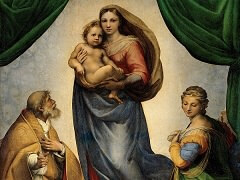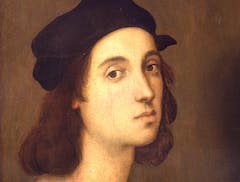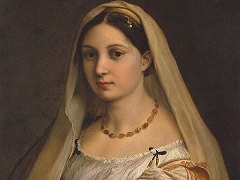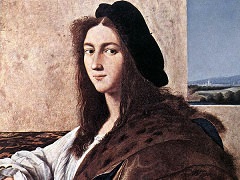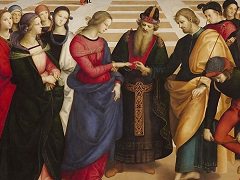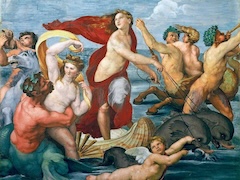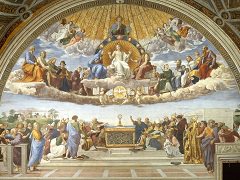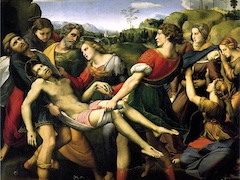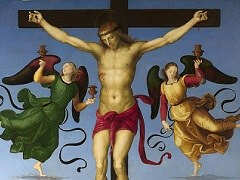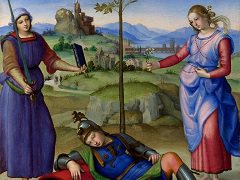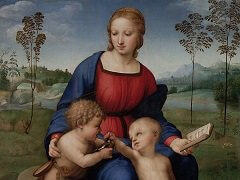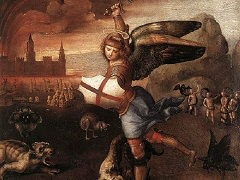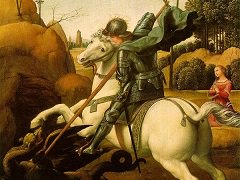The School of Athens - by Raphael
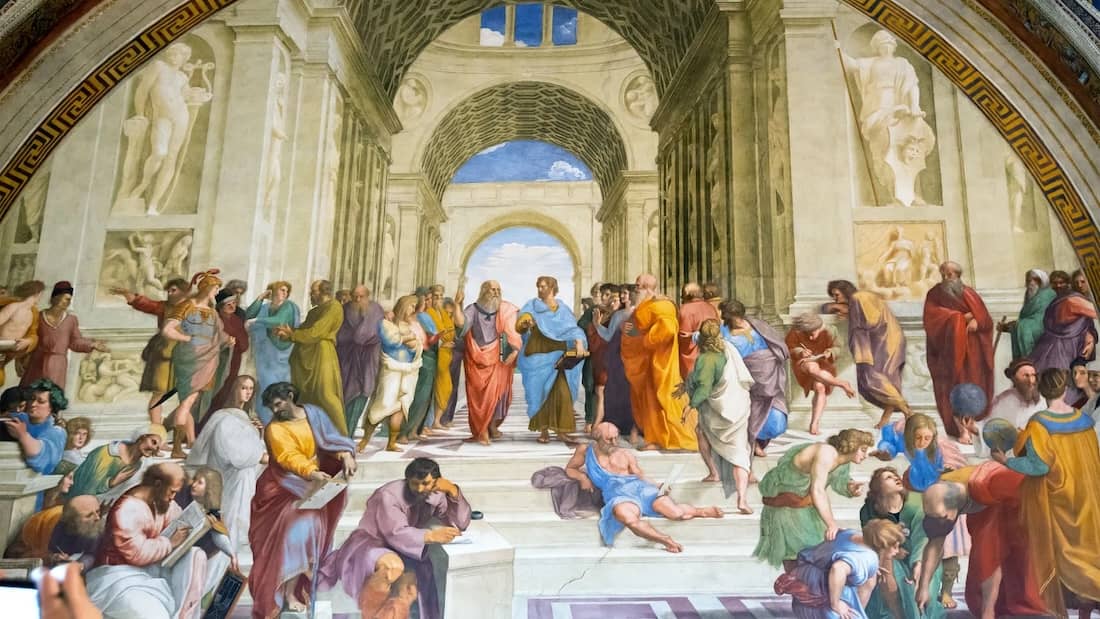
The School of Athens is a depiction of philosophy. The scene takes place in classical times, as both the architecture and the garments indicate. Figures representing each subject that must be mastered in order to hold a true philosophic debate - astronomy, geometry, arithmetic, and solid geometry - are depicted in concrete form. The arbiters of this rule, the main figures, Plato and Aristotle, are shown in the centre, engaged in such a dialogue.
If in the Dispute, the central axis contains all the primary components of the meaning, in its counterpart on the opposite wall - The School of Athens - the emphasis is on a horizontal reading, and the main figures, located on the top of the short stairs, are strung out like an animated frieze. Such a distribution is related to the fact that in this fresco the stress is on earthly zones rather than on otherworldly ones so characteristic of its analogue. In the case of the Disputa, the golden tonalities reflect theological and spiritual values i n connection with the miraculous nature of the Eucharist; these are in contrast to the clear blues and whites and the crisp, charged atmosphere that characterizes The School of Athens. This is a realm where the power of philosophy and reason, as opposed to faith, seems to dominate.
The School of Athens is the fresco in one of the four Raphael Rooms which form a suite of reception rooms, now part of the Vatican Museums in Vatican City. Together with Michelangelo's Sistine Chapel Ceiling frescoes, they are the grand fresco sequences that mark the High Renaissance in Rome.


